Study Guide: Control
advertisement
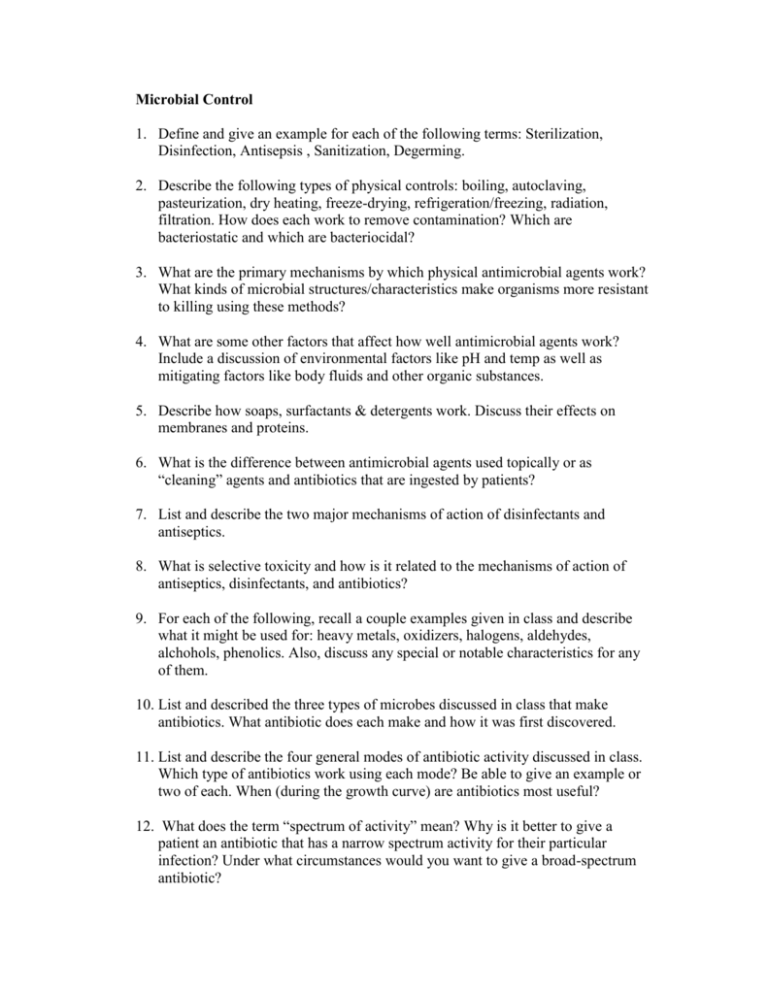
Microbial Control 1. Define and give an example for each of the following terms: Sterilization, Disinfection, Antisepsis , Sanitization, Degerming. 2. Describe the following types of physical controls: boiling, autoclaving, pasteurization, dry heating, freeze-drying, refrigeration/freezing, radiation, filtration. How does each work to remove contamination? Which are bacteriostatic and which are bacteriocidal? 3. What are the primary mechanisms by which physical antimicrobial agents work? What kinds of microbial structures/characteristics make organisms more resistant to killing using these methods? 4. What are some other factors that affect how well antimicrobial agents work? Include a discussion of environmental factors like pH and temp as well as mitigating factors like body fluids and other organic substances. 5. Describe how soaps, surfactants & detergents work. Discuss their effects on membranes and proteins. 6. What is the difference between antimicrobial agents used topically or as “cleaning” agents and antibiotics that are ingested by patients? 7. List and describe the two major mechanisms of action of disinfectants and antiseptics. 8. What is selective toxicity and how is it related to the mechanisms of action of antiseptics, disinfectants, and antibiotics? 9. For each of the following, recall a couple examples given in class and describe what it might be used for: heavy metals, oxidizers, halogens, aldehydes, alchohols, phenolics. Also, discuss any special or notable characteristics for any of them. 10. List and described the three types of microbes discussed in class that make antibiotics. What antibiotic does each make and how it was first discovered. 11. List and describe the four general modes of antibiotic activity discussed in class. Which type of antibiotics work using each mode? Be able to give an example or two of each. When (during the growth curve) are antibiotics most useful? 12. What does the term “spectrum of activity” mean? Why is it better to give a patient an antibiotic that has a narrow spectrum activity for their particular infection? Under what circumstances would you want to give a broad-spectrum antibiotic? 13. How do antiviral agents work? Why are they so limited in their capabilities? 14. Describe how multi-drug resistant strains of pathogens can develop. What are some ways of combating antimicrobial resistance? 3.




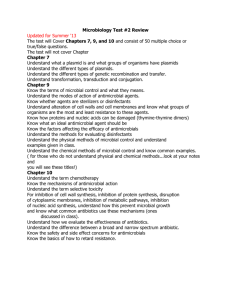

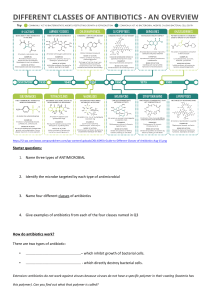
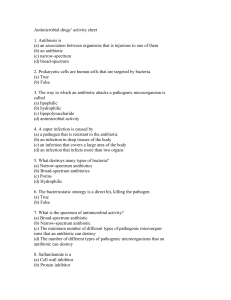
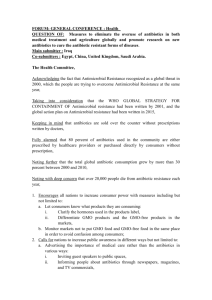

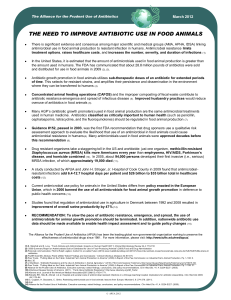
![Professor Anthony Kessel, Director of Public Health Strategy, Health Protection Agency [PPT 10.39MB]](http://s2.studylib.net/store/data/015100065_1-52ef62fa093dba928ff11f1845be5aa1-300x300.png)